Cities drive animals and plants to evolve
Species are adapting to urban pollution, traffic and shrinking habitats through changes in their genes

Even in Chicago, here, home to almost 2.7 million people, there are parks and spaces where wildlife live. Some species may have made genetic accommodations, however, to survive in such congested landscapes, studies now show.
Marchello74 /iStockphoto
Ever seen a raccoon unlatch a garbage can in search of leftovers? Or shimmy across power lines to get from one rooftop to another? If so, you’ve witnessed an animal adapting its behavior to city life. That’s been going on since people started building cities thousands of years ago.
Now, biologists are seeing signs that animals and plants are also adapting in a more basic way to survive in cities. Their genes are changing.
Genes are segments of DNA that influence how an organism looks and functions. An animal or plant’s DNA is like an instruction book for how it develops and grows. Some instructions guide its reproductive habits. Others influence the way it moves. Still others might let it withstand poison.
Urban pollution, traffic and shrinking wild spaces have been causing changes in these genetic instructions. And scientists have been tracking more and more signs of these genetic changes. They’ve seen it in fish in New York’s polluted Hudson River, in weeds growing out of sidewalks in France, in cliff swallows living near highways in Nebraska and in the mice scampering through New York City parks.
When genes change in response to their environment, it’s called evolution. Some of those changes may leave animals and plants better suited to their homes. It may offer new traits that increase the odds of surviving long enough to reproduce. This means the individuals will pass on these new traits to their offspring. Eventually, traits that had once been rare can now become common throughout a population.
Until fairly recently, scientists thought evolution happened very slowly — too slowly for people to notice during their lifetimes. But no more. “We are now showing evolution can occur a lot faster than most people think,” says Isaac Wirgin. And, he adds, that’s true “especially in urban environments.”
Wirgin is an expert in environmental medicine at New York University Medical Center in New York City. He studies how the environment affects the health of animals, including humans. It may seem like a good thing for animals and plants to adapt to city life. But he warns that there can be costs that biologists are only beginning to understand.
“In my mind, it’s not a good thing,” he says. “Usually if you evolve to become less sensitive to a pollutant, you’re less good at reproduction or life expectancy, or you’re more sensitive to other stressors.”
Wirgin is talking about evolutionary costs. These are trade-offs. To gain some advantage, a species often will pay a price. For example, if an animal evolves to become bigger, fewer predators can kill it. But being bigger will now mean the animal needs more food. And that can be a problem when food becomes scarce.
The case of the Hudson River PCBs
Urban evolution is hardly new. During the Industrial Revolution in the 1800s, heavily polluted areas of Britain turned black with soot. The light-colored peppered moths that lived there now stood out against dark walls and tree trunks. In no time, they were picked off by predators. But some mutations — accidental genetic changes — caused some peppered moths to have black wings. This camouflaged them in the newly sooty environment. And over time, they survived to breed more black moths. The light-colored ones didn’t. In short order, most peppered moths were now black.
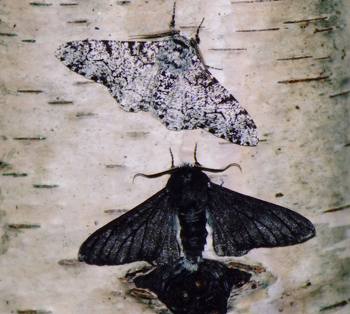
In the past hundred years, humans have built and enlarged cities at a much faster pace than ever before. As cities grew, so did their impacts on the environment — and on evolution. A century ago, just two in every 10 people lived in towns. Today, more than half of us do. And our cities are rapidly spreading across more and more of the globe.
A growing number of scientists are asking what this means for city wildlife. Wirgin is among them. He led a research team that studied fish living in a very polluted segment of the Hudson River. Some these fish, called tomcod, carried a genetic variant. That’s a gene with a slightly different DNA sequence — or genetic blueprint — from most others of its species.
This genetic variant helped the tomcod that carried it withstand some toxic chemicals called PCBs, for polychlorinated biphenyls (Paal-ee-KLOR-ih-nay-ted By-FEE-nuls)).
Manufacturers relied on these chemicals for many decades as a fluid to insulate industrial equipment. And from 1947 to 1976, two General Electric plants spewed PCB pollution into the Hudson River. In all, they released nearly 600,000 kilograms (about 1.3 million pounds) of those oily chemicals. PCBs don’t easily break down, so they can remain in air, water and soil for a long time.
Eventually, the United States banned the production of PCBs, as did other nations. Prompting that decision: Research showed PCBs could cause cancer in animals, and likely posed a similar risk to people.
What about those Hudson River fish living amidst all of that PCB pollution? Many young fish exposed to PCBs are severely deformed. For instance, they may lack a jaw. With such defects, these fish can starve.
Some protection comes with a cost
But the tomcod with the newfound genetic variant survived. This variant showed up in a gene called AHR2. It appears to shield the fish from PCBs’ normal toxicity. Wirgin and his team published their findings in Science.
Here’s how the gene adaptation works: The normal form of AHR2 gives instructions for building a certain protein in the fish. To do damage, PCBs must attach to this protein. But the variant gene gives slightly different protein-building instructions. This change makes it hard for PCBs to latch on.
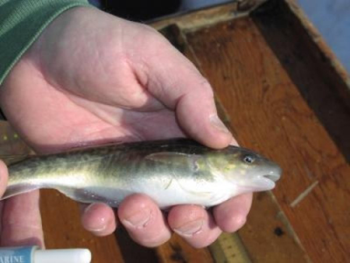
A small number of tomcod carried this gene variant before this region of the Hudson River became heavily polluted with PCBs. After the oily pollutants started pouring into the river, tomcod with the more common gene mostly died off. Today, nearly all tomcod in this part of the Hudson carry the protective form of the AHR2 gene.
Elsewhere, in less polluted areas — in Canada and New England, for example — tomcod populations still have the susceptible form of the gene.
Wirgin’s group did not look for a cost to the tomcod’s resistance to PCBs. But other researchers found such a trade-off in a different fish, the Atlantic killifish.
Joel Meyer and Richard Di Giulio of Duke University in Durham, N.C., studied this species in Virginia’s Elizabeth River. A former wood-treatment plant had polluted the water with a family of chemicals known as PAHs, for polycyclic (PAH-lee-SIK-lik) aromatic hydrocarbons. These chemicals have been linked to cancers and heart deformities.
The killifish in this river showed no sign of such effects. They did, however, show less tolerance than most of their species for the low oxygen levels that sometimes occur in many lakes and rivers. Concluded Meyer and DiGiulio: These fish paid a price for evolving the ability to resist these toxic pollutants.
But back to the Hudson River tomcod. When they evolved resistance to PCBs, there may have been wider effects on the ecosystem, says Wirgin. Tomcod are a favorite snack for larger fish. When predators eat those tomcod, they now get a toxic bonus — some PCBs in every bite. Pollutants from the smaller fishes’ bodies build up in larger fish. This process is known as bioaccumulation.
There is no research on how it affects tomcod-munching fish. But Wirgin says this points to how urban evolution could affect entire food webs.
City weeds and cliff swallows
Plants have also evolved to meet the challenges of city living. Pierre-Olivier Cheptou is an evolutionary ecologist at the University of Montpellier in France. He studied a common weed called Crepis sancta. It grows in small patches of soil around sidewalk trees in Montpellier. He compared city-dwelling members of this species to those in the surrounding countryside.
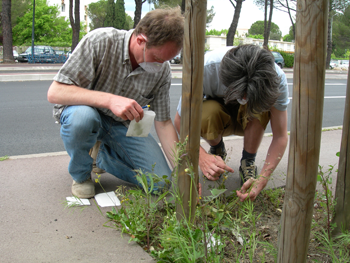
Those in the country tend to make lightweight seeds, they found. These easily travel with a breeze. But in the city, such seeds would probably fall onto concrete and die. So there, the city weeds produced compact seeds. Being relatively heavy, they drop close to the plant. That allows them to sprout in the surrounding soil. Cheptou published his team’s study in the Proceedings of the National Academy of Sciences.
This change will likely have an evolutionary cost for the plants, he says. If their seeds don’t travel far, the weeds are unlikely to breed with those in other patches of soil. This means the population will develop less variation in its DNA. In other words, they will have little genetic diversity. Wildlife with little genetic diversity tend to be more vulnerable to disease.
Traits that help an organism survive in the short term, such as heavier seeds, “may lead to extinction in the longer term,” worries Cheptou.
Still, there may be plants and animals that have evolved to handle city living without paying a price. Cliff swallows nesting under highway overpasses in Nebraska might be among them.
Charles Brown is an ecologist who works at University of Tulsa in Oklahoma. Since 1982, he and Mary Bomberger Brown have been studying cliff swallows. Mary is an ornithologist, or bird biologist. She works at the University of Nebraska in Lincoln.
The cliff swallows they study have been building their gourd-shaped mud nests under highway overpasses in southwestern Nebraska. Over 30 years, the two scientists saw a steady drop in the number of birds killed by cars and trucks. And this surprised them. After all, the bird colonies were growing and the traffic had not declined.
Mist nets are pieces of see-through mesh hung between two poles. Scientists use them to safely capture birds for study. The researchers set up such nets close to the bridge. And as they compared road-killed birds with those caught in nearby mist nets, they got another surprise. Birds in their mist nets had much shorter wings than those killed by the cars.
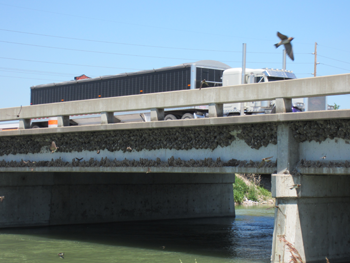
The researchers now think shorter wings help birds dodge traffic better. That’s why short-winged birds were more likely to end up alive in the nets, not dead on the street.
A change to a major physical trait, such as wing length, is almost certainly a result of a genetic change, says Charles Brown. Unlike the road-killed birds, these short-winged fliers have survived long enough to pass down their genes. The researchers published their results a few years ago in the journal Current Biology.
Brown says birds evolving shorter wings over a few decades really surprised him. He agrees with Wirgin and Cheptou that such evolution can sometimes make an animal or plant less able to deal with other types of stress. But he and Bomberger Brown did not find any harmful side effect in the birds they studied.
“It would appear to be a win-win situation for the swallows,” he concludes.
Lonely mice
White-footed mice also may be evolutionary winners.
These mice once lived all over North America. But in New York City, they are now stuck mostly in city parks. Those in each park are separated from those elsewhere by roads and buildings. This means that those in one park can’t breed with those in another. The mice in each park have therefore evolved genes that help them survive in their specific home turf.
Some populations have evolved a genetic variant that protects them from being poisoned by heavy metals such as lead and chromium. (Heavy metals can be part of a waste produced by some industries. Lead and chromium, for instance, can cause organ damage and probably also cancer.) The mice exposed to such heavy metals likely evolved the genetic variant because the soil in their parks has accumulated so much chromium or lead over the years.
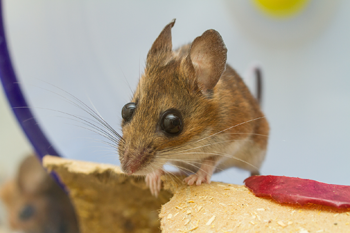
Other populations of park mice evolved genes that boost their ability to fight disease. That is probably because they are crowded into a particularly small area. Such tight quarters tend to make it easier for diseases to spread.
That’s the conclusions that Jason Munshi-South came to, anyway. He’s a biologist at Fordham University in New York City. He has been studying these mice. His team described its findings a few years ago in PLOS ONE.
A small number of mice were likely already carrying the genes that protect against heavy metals or infectious diseases. Mice with these variant genes lived long enough to have babies and pass down their genes. Eventually, more and more of them made up most of the population.
That’s good news for the mice. But Munshi-South says that doesn’t mean other animals can similarly evolve rapid changes to survive the challenges of city living. Indeed, he observes: “Most species do not do well in cities and no longer occur there.”







